第75章 MONEY OR SIMPLE CIRCULATION(56)
Mill's whole wisdom is reduced to a series of assumptions which are both arbitrary and trite.He wishes to prove that "it is the total quantity of the money in any country"which determines the price of commodities or the value of money.If one assumes that the quantity and the exchange-value of the commodities in circulation remain constant,likewise the velocity of circulation and the value of precious metals,which is determined by the cost of production,and if simultaneously one assumes that nevertheless the quantity of specie in circulation increases or decreases in relation to the volume of money existing in a country,then it is indeed "evident"that one has assumed what one has pretended to prove.Mill,moreover,commits the same error as Hume,namely placing not commodities with a determinate exchange-value,but use-values into circulation;his proposition is therefore wrong,even if one accepts all his "assumptions".The velocity of circulation may remain unchanged,similarly the value of precious metals and the quantity of commodities in circulation,yet they may nevertheless require sometimes a larger sometimes a smaller amount of money for their circulation as a result of changes in their exchange-value.Mill notices that a part of the money existing in a country circulates while another part stagnates.By means of a very odd rule of averages he assumes that all the money present in a country is actually in circulation,although in reality it does not seem to be so.If one assumes that in a given country 10million silver thalers circulate twice in the course of a year,then,if each thaler were used in only one purchase,20million could be in circulation.And if the total quantity of all forms of silver in the country amounted to 100million,it may be supposed that the 100million could be in circulation if each coin performed one purchase in five years.One could as well assume that all the money existing in the world circulated in Hampstead,but that each portion of it performed one circuit in 3,000,000years instead of,say,three circuits in one year.The one assumption is just as relevant as the other to the determination of the relation between the aggregate of commodity-prices and the amount of currency.Mill is aware of the crucial importance of establishing a direct connection between the commodities and the whole stock of money --not just the amount of money in circulation --in a particular country at a given time.He admits that the whole of the goods of a country are "not exchanged at once"against the whole of the money,but says that separate portions of the goods are exchanged for various portions of money at different times throughout the year.In order to remove this incongruity he assumes that it does not exist.Incidentally,the whole concept of a direct confrontation between commodities and money and their direct exchange is derived from the movement of simple purchases and sales or from the function performed by money as means of purchase.
The simultaneous appearance of commodities and money ceases even when money acts as means of payment.
The commercial crises of the nineteenth century,and in particular the great crises of 1825and 1836,did not lead to any further development of Ricardo's currency theory,but rather to new practical applications of it.It was no longer a matter of single economic phenomena --such as the depreciation of precious metals in the sixteenth and seventeenth centuries confronting Hume,or the depreciation of paper currency during the eighteenth century and the beginning of the nineteenth confronting Ricardo --but of big storms on the world market,in which the antagonism of all elements in the bourgeois process of production explodes;the origin of these storms and the means of defence against them were sought within the sphere of currency,the most superficial and abstract sphere of this process.The theoretical assumption which actually serves the school of economic weather experts as their point of departure is the dogma that Ricardo had discovered the laws governing purely metallic currency.It was thus left to them to subsume the circulation of credit money or bank-notes under these laws.